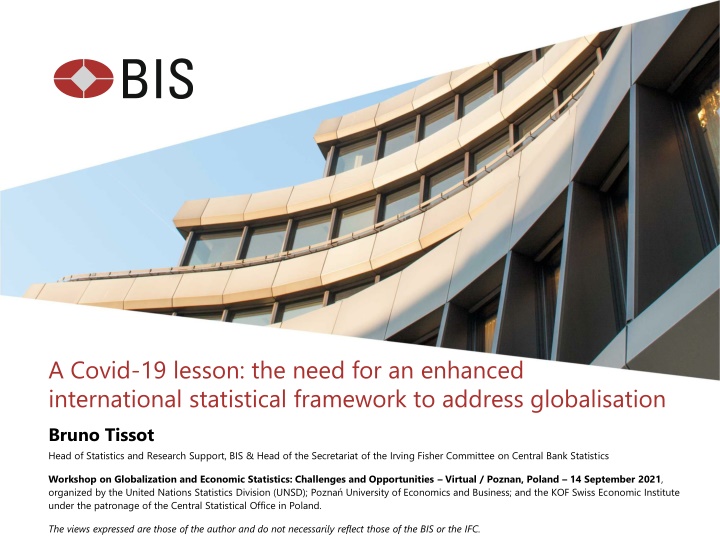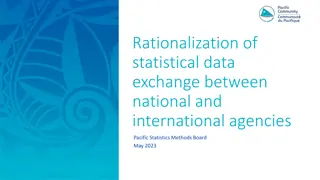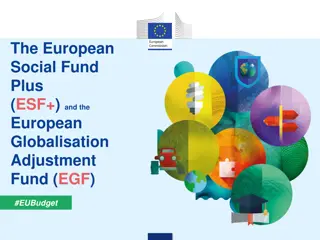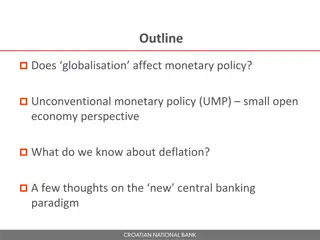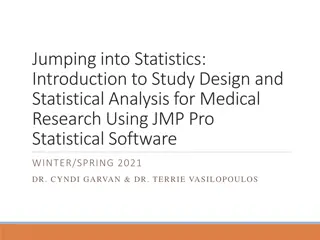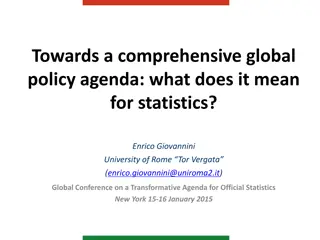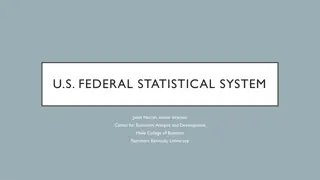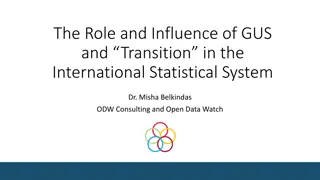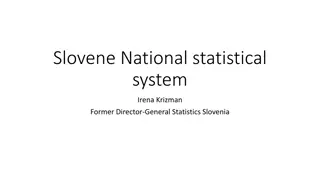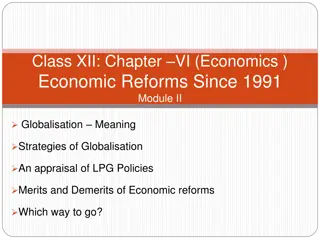Enhancing International Statistical Framework for Globalisation Challenges
Addressing the impact of Covid-19 on statistical frameworks, this article highlights the need for enhancing international statistical systems to tackle globalisation issues. The insights cover implications for central banks, producers, and users of statistics, emphasizing the importance of more data, flexibility, and innovation in statistical practices.
Download Presentation

Please find below an Image/Link to download the presentation.
The content on the website is provided AS IS for your information and personal use only. It may not be sold, licensed, or shared on other websites without obtaining consent from the author.If you encounter any issues during the download, it is possible that the publisher has removed the file from their server.
You are allowed to download the files provided on this website for personal or commercial use, subject to the condition that they are used lawfully. All files are the property of their respective owners.
The content on the website is provided AS IS for your information and personal use only. It may not be sold, licensed, or shared on other websites without obtaining consent from the author.
E N D
Presentation Transcript
A Covid-19 lesson: the need for an enhanced international statistical framework to address globalisation Bruno Tissot Head of Statistics and Research Support, BIS & Head of the Secretariat of the Irving Fisher Committee on Central Bank Statistics Workshop on Globalization and Economic Statistics: Challenges and Opportunities Virtual / Poznan, Poland 14 September 2021, organized by the United Nations Statistics Division (UNSD); Pozna University of Economics and Business; and the KOF Swiss Economic Institute under the patronage of the Central Statistical Office in Poland. The views expressed are those of the author and do not necessarily reflect those of the BIS or the IFC.
Overview 1. Covid-19 (CV19) impact on producers & users of statistics 2. Implications for central banks statistical function 3. Main international statistical framework lesson: need to enhance the 4. to in turn address globalisation 5. by making concrete progress in key areas 2
1. CV19 impact on producers & users of statistics Proactive response of official statisticians Facing production disruptions Dealing with distorted economic indicators Addressing a key CV19 dilemma: need for more data / relaxation in compilation obligations Challenges for data users Limited accuracy/availability of indicators Compilation difficulties & delays Larger uncertainty and data revisions 3
2. Implications for central banks statistical function General review triggered by CV19 More, not less information: timeliness, frequency, new needs Alternative data sources as a complement Reorganise the statistical production chain to Get a comprehensive overview of the economy Have flexible frameworks to address evolving users needs Incorporate complementary sources in main frameworks A wake up call for official statistics Make better use of existing data Revamp statistical frameworks by leveraging on innovation Enhance users experience with statistics 4
3. A new global framework for official statistics? Build on the G-20 Data Gaps Initiative (DGI) Key success factors Structured collaboration IOs / statistical systems Connection/reporting to policymakers Effective peer pressure mechanism Way forward after the DGI (post-2021) Support global production and use of official statistics Focus on the actual reporting of relevant data to other international workstreams eg SNA/BPM Three main areas of focus: existing statistics / new needs / global statistical infrastructure 5
3(i) Enhancing existing core official statistics Pursuing post-GFC statistical exercises Urgency underscored by the pandemic To compile better economic aggregates eg FA, debt To collect more granular financial information International progress monitoring (by the IAG?) 4 main financial areas for central banks, as highlighted by CV19 market turmoil in 2020 Credit flows Repos / Securities Financing Transactions (SFT) FX funding needs Derivatives 6
3(ii) Addressing newly-emerging data needs Access to alternative data Private data sources, administrative registers Complement to improve official statistics Information buffer in crisis times Leveraging on IT innovation / AI techniques Plus 3 topics not well covered by traditional economic and financial statistics Climate change / Environmental, Social & Governance (ESG) issues Distribution / inequalities Financial innovation (fintech) / inclusion 7
3(iii) Enhanced global statistical infrastructure Further the work undertaken after the GFC Global identifiers eg LEI Data standards eg SDMX 3.0 Data sharing / access / cooperation Macro / micro integration eg Regtech International cooperation is essential Address economic & financial globalisation Knowledge sharing and pilot projects eg AI tools Best practices eg data access principles Prioritisation of data needs for policy Outreach to non-G20 8
4. Addressing globalisation: (i) key challenges Important challenges to official statistics, reinforced by Rapid digital innovation (dematerialisation of economic activities) Complexity / limited transparency of multinational structures Increased importance of global financial centres Examples of such challenges Fragmentation of global production chains across borders Changing nature of FDI: increased financial role Difficulties to measure cross-border positions and flows Assessing global exposures (off- and on-balance sheet) Large effect on macro indicators: cf intragroup transfers of intangible assets (eg intellectual property products (IPPs)) in Ireland ... 9
4. Addressing globalisation: (ii) main requirements Enhancing the global statistical infrastructure eg legal entity identifier (LEI) Improving the exchange of confidential statistical data eg international data sharing Organising a comprehensive data collection for large corporates cf exercise conducted for global banks at the BIS Enhancing the granularity of SNA aggregates eg identification of special purpose entities (SPEs), foreign-controlled corporations, non-bank financial sub-sectors Complementing the residency-based framework of the SNA eg use information derived from consolidated accounting frameworks 10
5. Making concrete progress: (i) Nationality statistics The residency-based SNA relies on a triple coincidence national territory decision-making unit currency area Nationality-based statistics Nationality: country of residence of a firm s controlling entity Facilitates the monitoring of global, borderless MNEs indicators Allow balance sheets to be considered on a consolidated basis Independently of the location of controlled affiliates Help to assess global exposures BIS nationality statistics (consolidated or not) as an example Complementary information: parent relationships complex/unstable 11
5. Making concrete progress: (ii) Cross-border activities Measurement issues Firms: cross-border impact of complex intra-group operations Households: foreign holdings difficult to capture due to tax evasion / role of foreign custodians Issues masking the true geography of investors exposures Can have sizeable impact on BoP and IIP indicators Developing a global view BIS statistics provide country counterparty breakdowns Cross-border information linking issuers and ultimate investors Use of global sources: mirror data; data sharing; global registers 12
5. Making progress: (iii) Global financial intermediation Growing importance of financial globalisation FDI transactions: financial purpose instead of real investment Impact of regulatory/tax optimisation on MNEs relocation Complex structures: network of affiliates with little presence SPEs treated as institutional units if they are not in the parent economy (even though they may not act independently) Role of financial centres in global capital allocation Main countries involved in FDI operations today are frequently small open economies and financial and offshore centres Trend reinforced by the shift in global credit intermediation from banking to offshore debt issuance (often classified as FDI) Need to better identify SPEs, foreign firms, control relationships 13
Thank you!! Selected references De Beer, B and B Tissot (2020): Implications of Covid-19 for official statistics: a central banking perspective , IFC WP no 20 IFC Bulletin, no 52 (2020): Bridging measurement challenges and analytical needs of external statistics: evolution or revolution? Reporting guidelines for the BIS international banking statistics (2019) BIS 87th Annual Report (2017): Understanding globalisation , Chapter VI BIS Working Papers no 587 (2016): Globalisation and financial stability risks: is the residency-based approach of the national accounts old-fashioned? IFC Report no 2 - An IAG reference document (2015): Consolidation and corporate groups: an overview of methodological and practical issues Questions? bruno.tissot@bis.org 14
